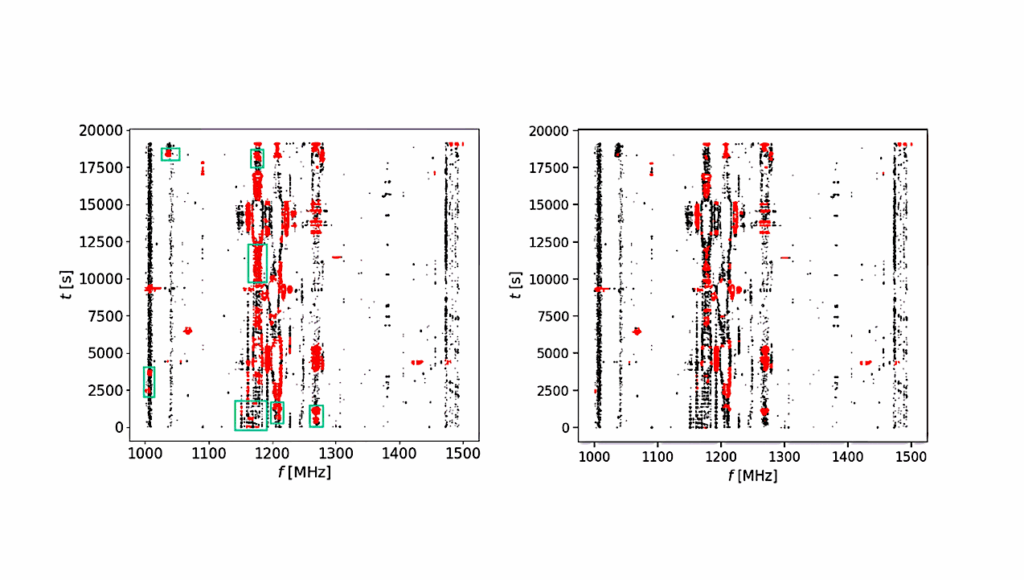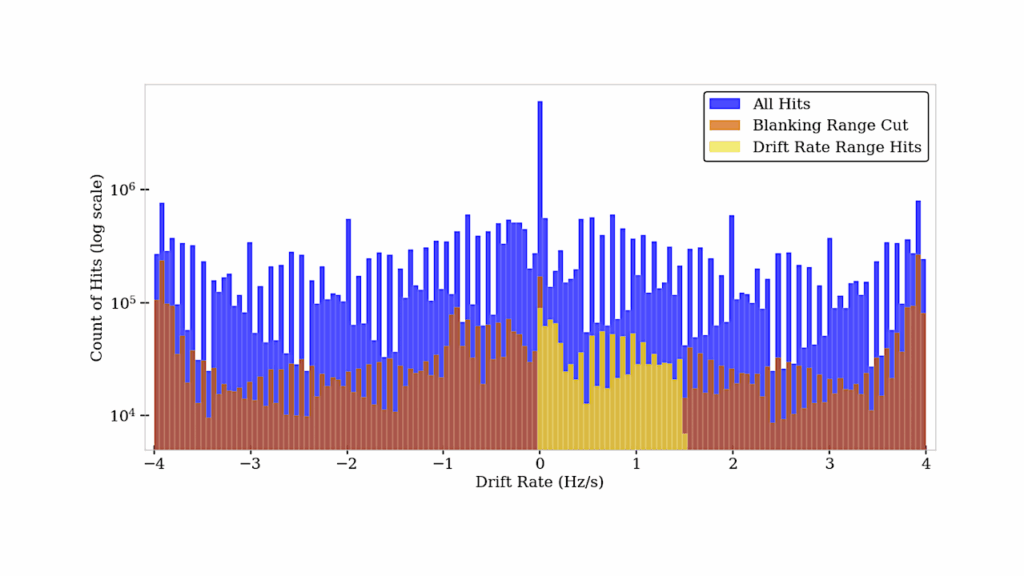The Breakthrough Listen Search for Intelligent Life: A Laser Search Pipeline for the Automated Planet Finder

The Search for Extraterrestrial Intelligence (SETI) has traditionally been conducted at radio wavelengths, but optical searches are well-motivated and increasingly feasible due to the growing availability of high-resolution spectroscopy.
We present a data analysis pipeline to search Automated Planet Finder (APF) spectroscopic observations from the Levy Spectrometer for intense, persistent, narrow bandwidth optical lasers.
We describe the processing of the spectra, the laser search algorithm, and the results of our laser search on 1983 spectra of 388 stars as part of the Breakthrough Listen search for technosignatures.
We utilize an empirical spectra-matching algorithm called SpecMatch-Emp to produce residuals between each target spectrum and a set of best-matching catalog spectra, which provides the basis for a more sensitive search than previously possible.
We verify that SpecMatch-Emp performs well on APF-Levy spectra by calibrating the stellar properties derived by the algorithm against the SpecMatch-Emp library and against Gaia catalog values.
We leverage our unique observing strategy, which produces multiple spectra of each target per night of observing, to increase our detection sensitivity by programmatically rejecting events which do not persist between observations. With our laser search algorithm we achieve a sensitivity equivalent to the ability to detect an 84 kW laser at the median distance of a star in our dataset (78.5 ly).
We present the methodology and vetting of our laser search, finding no convincing candidates consistent with potential laser emission in our target sample.
Anna Zuckerman, Zoe Ko, Howard Isaacson, Steve Croft, Danny Price, Matt Lebofsky, Andrew Siemion
Comments: 24 pages, 12 figures. Accepted to The Astronomical Journal
Subjects: Instrumentation and Methods for Astrophysics (astro-ph.IM); Earth and Planetary Astrophysics (astro-ph.EP); Solar and Stellar Astrophysics (astro-ph.SR)
Cite as: arXiv:2301.06971 [astro-ph.IM] (or arXiv:2301.06971v1 [astro-ph.IM] for this version)
Submission history
From: Anna Zuckerman
[v1] Tue, 17 Jan 2023 15:47:36 UTC (3,361 KB)
https://arxiv.org/abs/2301.06971
Astrobiology, SETI








